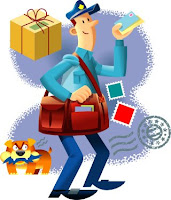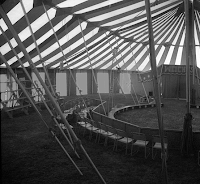 At the moment I am working with six fantastic consultants who operate in some of the same areas as we do including facilitation and training in sustainable development. This is a wildly international bunch, they are from Ghana, UK, Mexico, Switzerland and Mauritius, and have all kinds of different sector experiences, from government to private. We have been working together now for a couple of months, each one is linked to 6 or 7 of my colleagues in different parts of the world, supporting the development of workshops and sessions they will run at our upcoming Congress.
At the moment I am working with six fantastic consultants who operate in some of the same areas as we do including facilitation and training in sustainable development. This is a wildly international bunch, they are from Ghana, UK, Mexico, Switzerland and Mauritius, and have all kinds of different sector experiences, from government to private. We have been working together now for a couple of months, each one is linked to 6 or 7 of my colleagues in different parts of the world, supporting the development of workshops and sessions they will run at our upcoming Congress.
And it is fascinating to reflect on their practice and see what kinds of things they are each doing that gives me the best user experience. Companies refine their products based on user experience reports. What if I pulled out all the things that I like best and created the super consultant? What would that consultant do?
1. Be responsive: My Zero-Inbox propensity means I am not usually a fan of little emails, but somehow working in a distributed team, with people around the world, in different time zones, and with variable internet access, I delight with the short email saying “Thanks I got it” or “I am working on this tomorrow”. Rather this than no news and then wondering if the three emails sent are stacked up in an in-box or have been routed accidentally into a spam folder. I love getting voicemail from these consultant, a skype chat message, or an inpromptu call, just to know that things are ticking away. Responsiveness includes attention to deadlines of course, and even when they need to slide, advance notice, and a new proposed firm deadline makes this easier to work with.
2. Have a system: When you give over a project you would love to do yourself to someone sles, you are happy when you know it is in good hands. Evidence of a system builds confidence. I am happy to get an email back with a summary of the six work items in progress and their status, or great follow-up on a query I had last month that was not yet ready to be answered (and had not been forgotten). I am comforted when I know that things are not getting lost, that as the coordinator my overviews, matrices, job aids, and tables are being used as they guides they were meant to be, and not buried or forgotten in the email blur.
3. Add value: Maybe those matrices I’m sending aren’t perfect – how wonderful it is when the consultant changes them around so they are more user friendly. Or sends through tips to everyone else, or asks that great aggregator question that prompts me to put together a better job aid or solve a general problem for the whole group, all this on top of the work at hand. I love it when people input ideas and questions that help everyone do a better job…
4. Give feedback: …including me. What feedback can be offered on the overall process, what are we noticing about how things are running more generally, and what would make this smoother and easier to implement and manage for everyone? What do people need from me as a coordinator to help them do great work, and can this input be provided mid-process and not afterwards when my ability to act is limited.
5. Be nice: This goes without saying and in stressful situations, this goes a long way. Its easy, its free, and it shows others that their user experience is important. I wrote another blog post on this one (The Golden Rule).
This last one is just a nice to have – for the amazing consultant, I want to spread the word:
6. Have excellent communication materials: A terrific simple website, a folder with a short brochure, an excellent 100 word bio, a neat short CV, a couple of good photos. All ready to go by reply button. That helps me spread the word.
Overall quality of work of course is a given, these other things help to make sure that the word-of-mouth works, and ensures repeat business based on a great user experience. We can all learn something here – from time to time our Unit also works in a consulting-type frame when we are doing projects with other programmes and units in house. Also, these lessons might be useful for people working in distributed teams, technology-mediated or mobile work situations (e.g. working from home). Finally, if I know what I like, I can ask for it (just like those I-Phone users)- I see a radical revision to TORs coming…

 What kind of creative process produces ideas like a
What kind of creative process produces ideas like a 




 See Doug Johnson’s
See Doug Johnson’s 





